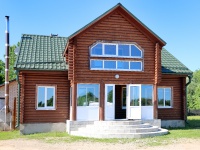Озёра Беларуси:
|
Река Западная Двина: водная артерия истории, культуры и природыРека Западная Двина — одна из крупнейших рек Восточной Европы, берущая начало у озера Заверховье на Валдайской возвышенности в России и впадающая в Рижский залив Балтийского моря. Её протяжённость составляет около 1 020 км, из которых почти 330 км проходят по территории Беларуси.
Река протекает через Смоленскую область России, Витебскую область Беларуси и территорию Латвии, где она известна под названием Даугавa. Основные притоки: Торопа, Каспля, Западная Березина, Ула и Дрисса. Ширина реки варьируется от 50 до 300 метров, а глубина достигает 12 метров. Благодаря устойчивому водному стоку, Западная Двина используется для судоходства и гидроэнергетики (в том числе через Полоцкую ГЭС).
Туристический потенциалСегодня Западная Двина активно используется в сфере туризма и рекреации. Река идеально подходит для экологического туризма, водного спорта и познавательных экскурсий. Вдоль её течения расположены многочисленные санатории, базы отдыха, культурно-исторические маршруты и природные тропы.
Западная Двина остаётся не только важной природной артерией, но и точкой притяжения для тех, кто ценит активный отдых, историю и красоту белорусского ландшафта.
Рядом с водоёмом расположены следующие объекты: |






